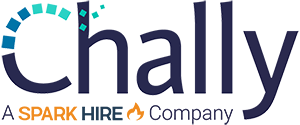The New Normal of Selling: Part 2
Hiring in the New Normal – identifying sales candidates who will thrive through changing sales approaches and structures
Finding the right sales candidates who can sell successfully has always been tough. Once hired, a salesperson’s success in achieving an organization’s sales goals can be explained with an even 50/50 split between the individual’s fit for the role and the performance conditions surrounding the sales role[i]. Getting the hiring decision right is essential for success on the job. Hiring a salesperson who gets up-to-speed quickly, who fits with the culture and is motivated by the specific job, and who can progress their career are essential sales success factors. These factors can be quantified as:
- Ramp time – The time it takes for a newly hired salesperson to reach proficiency
- Tenure – How long the salesperson stays with the company
- Promotability – The potential to grow into more senior sales roles or sales management
Most organizations struggle with all three factors.
There are multiple variables that impact the ramp time it takes a salesperson to reach proficiency. The salesperson’s skills and experience, the complexity of the sale, the quality of onboarding and training, and the aptitude of sales leadership to name a few. Research shows that the average ramp time is approximately three months. This means that, on average, companies do not start to see a positive return on the investment of hiring a salesperson until three months after they are hired. It takes even longer to recoup recruitment and training investment costs. Considering that 15% of newly hired salespeople leave the company within the first 12 months, a positive return on investment in hiring and training new hires is often unrealized[ii].
The average tenure for a salesperson has steadily declined in the last decade, dropping 40% from 2.5 years in 2010 to 1.5 years in 2018. The turnover rate for salespeople in 2018 increased to 39%. The impact of the pandemic has reversed this trend for now. In 2020 we saw a modest decrease in turnover, with average salesperson tenure increasing 3.6 months and the overall turnover rate decreasing to 26%. A closer look at the 2020 data shows that this improvement in salesperson retention is almost entirely accounted for by a decrease in voluntary turnover – fewer salespeople left the safety of their current job on their own accord in 2020. However, hiring salespeople that can sell was still a challenge. Involuntary turnover – the percentage of salespeople who were fired (excluding COVID related reductions in force) remained steady at 15% from 2018 through 2020[iii].
Hiring salespeople with the potential to be promoted is both a competitive advantage and a significant challenge[iv]. Tenure is correlated with increasing value creation[v]. The longer a salesperson is with the same organization, the more expertise they acquire and the more value they bring to customers and colleagues. Most sales organizations recognize the benefit of tenure and career growth and have well defined career paths offering opportunities for promotion and increased earnings. On average, it takes just under 18 months for an entry level salesperson to be promoted. Unfortunately, the average tenure of a salesperson is also 18 months – meaning half the salesforce leaves the organization at the same time the average first promotion is available. This creates an even greater opportunity cost than one might think. Two-thirds of the turnover in the first 18 months is voluntary[vi], indicating that a large portion of the exiting talent have the potential for career success in the role.
Compounding the challenge of hiring salespeople who can sell is the dearth of experienced job candidates. In 2010, the average job opportunity for entry and mid-level sales required 2.5 years professional sales experience. In 2020 the required experience dropped to 1.5 years[vii]. In addition, more companies are recruiting for sales roles from non-sales candidate pools[viii]. This means sales leaders are hiring salespeople and betting that they have the potential to learn on the job.
What can sales leaders do to increase their odds in hiring salespeople that can sell?
Define what success looks like
Don’t rely on outdated and inaccurate sales profiles. Precisely define the sales profile. Identify the requisite knowledge, skills, abilities, and attributes required for success in the role. This is more important than ever. As discussed in Part I of this blog series, the requirements for sales success are changing more rapidly than ever. Entire sales organizations are restructuring how salespeople engage customers – remote and virtually selling are here to stay and it is changing the requirements of the sale profile.
Assess for job fit and potential
The majority of hiring decisions are based on a series of unstructured interviews conducted by hiring managers – the “I know it when I see it” model of interviewing. Unstructured interviews lead to accurate hiring decisions only 25% of the time[ix]. Unstructured interviews also risk introducing bias into the hiring decisions leading to unethical and low-quality hiring decisions while increasing avoidable legal risk. Utilizing unbiased and objective assessments early in the process allows candidates to be screened through a valid assessment and prevents decision makers from falling in love with a candidate, then ignoring objective assessment data later in the process.
Make sure the assessment you use is valid. This means it needs to be based in science and accurately predict the traits required for success in the specific sales role. Ask the assessment provider for proof that their assessment is valid. Any reputable provider should be excited to share evidence of their assessment’s validity with you. When possible, ask the vendor to further validate the assessment to your specific sales profile(s). There are different approaches to validating an assessment. Unfortunately, some providers use approaches that appear to be valid but are, in fact, useless. Your provider should have an industrial psychologist on staff who can help validate the assessment to your specific job profile.
After the hire
Include assessment results in onboarding and training activities. The information gathered in the hiring process can provide targeted onboarding and coaching for new hires (more on this in Part III of this series), further accelerating ramp time, increasing commitment to the organization, and developing talent for the future.
For more information on hiring sales talent check out our blog: Four Essential Steps to Hiring Top Sales Talent
[i] 2019 Sales Benchmark Index (SBI), 10 Causes of High Sales Rep Turnover, December 17, 207
[ii] TBG 2021 Sales Development Report, https://blog.bridgegroupinc.com/hubfs/resources/TBG%202021%20Sales%20Development%20Report.pdf
[iii] TBG 2021 Sales Development Report, https://blog.bridgegroupinc.com/hubfs/resources/TBG%202021%20Sales%20Development%20Report.pdf
[iv] Endnote 4 McKinsey & Company, Maximize the lifetime value of your sales force, March 1, 2019
[v] Endnote 5 McKinsey & Company, Maximize the lifetime value of your sales force, March 1, 2019
[vi] TBG 2021 Sales Development Report, https://blog.bridgegroupinc.com/hubfs/resources/TBG%202021%20Sales%20Development%20Report.pdf
[vii] TBG 2021 Sales Development Report, https://blog.bridgegroupinc.com/hubfs/resources/TBG%202021%20Sales%20Development%20Report.pdf
[viii] TBG 2021 Sales Development Report, https://blog.bridgegroupinc.com/hubfs/resources/TBG%202021%20Sales%20Development%20Report.pdf
[ix]Simon Desjardins, Unstructured Interviews: Less Predictive Than We Think, March 20, 2017



